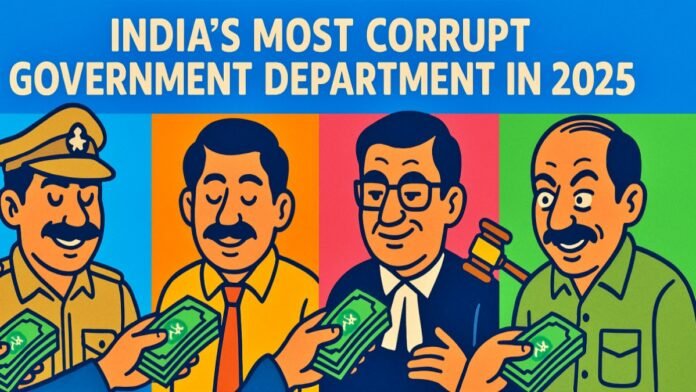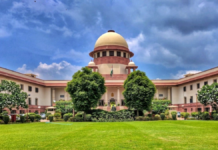
Key Points
- Railways, local bodies, and police top the list of corruption complaints in 2025, based on official data and surveys.
- Bribery is rampant across departments handling land, taxes, health, and urban development, often involving both officials and middlemen.
- Over 66% of Indian businesses admit paying bribes to government officials for licenses, approvals, or routine work many feel coerced to do so.
- Middlemen significantly inflate the bribe amount, with local leaders often taking a cut.
- Corruption hotspots vary by state, but core problems are consistent nationwide.
New Delhi: Corruption remains deeply entrenched in India’s public sector, cutting across city and rural departments alike. Reporting from vigilance agencies, anti-corruption bureaus, and landmark surveys reveal a disturbing consistency in the departments most vulnerable to malpractice and bribery.
1. Railways and Local Bodies
- Railway employees received the highest number of corruption complaints in 2023-25, followed by local bodies and municipal administration staff. Common issues include bribery for seat reservations, illegal freight management, and property encroachment clearances.
2. Police Department
- Frequent complaints of bribery in exchange for bail, manipulating FIR registrations, illegally collecting money during routine checks, and partial interventions in land or civil disputes.
3. Revenue Department
- Bribery and manipulation in land mutation, property registration, issuing certified copies, and other record-keeping functions. Revenue officials are among the most arrested for corrupt acts.
4. Municipal Corporation/Municipality
- Corruption to get building plans approved, for sanitation contracts, and for overlooking illegal constructions. Municipal staff widely cited for extracting bribes to expedite public works or ignore violations.
5. Gram Panchayat/Block Level
- Irregularities and bribes in rural development schemes (housing, toilets, ration cards, pensions), often involving local leaders and panchayat staff. Middlemen inflate bribe demand reported in both state and national agencies’ crackdowns.
6. Electricity Department
- Allegations of meter tampering, inflated bills, delay in or refusal of new connections/repairs unless bribes are paid. Power department officials are regularly named in business and citizen complaints.
7. Transport/RTO
- Issuing driving licenses without proper tests, vehicle fitness certificates for unfit vehicles, and alleged collusion with agents for vehicle registration. Businesses widely report bribery at transport offices.
8. Government Hospitals/Health Department
- Corruption in supply of medicines, commission-taking by doctors for sending patients to private hospitals, and unnecessary prescriptions. Health department staff frequently named in business bribery surveys.
9. Education Department
- Teacher recruitment scams, fake attendance, and collaboration with private entities for personal gain. Routine bribes for transfer orders or basic service delivery cited by watchdogs.
10. Tax Departments (Income Tax, GST)
- Acceptance of bribes in exchange for avoiding raids, filing fake returns, or illegal money recovery. Tax officials among the top recipients of bribes, especially from businesses seeking compliance clearances.
India’s Corruption Crisis: The Role of Middlemen & State Variation
The bribe amount often multiplies due to the involvement of middlemen, local politicians, and brokers. State and district-wise levels of corruption vary significantly: for instance, Gujarat’s Urban Development and Revenue departments top recent complaint charts, while Andhra Pradesh and Telangana reported spikes in ACB arrests for revenue and police officials.
Why Is Corruption So Pervasive?
Several factors sustain corruption:
- Complicated procedures and excessive red tape in government processes.
- Lack of digitization and transparency, especially at the local level.
- Weak enforcement and slow, uneven action against offenders.
- Middlemen who thrive on people’s fear or need for speed in government services.
Recent Trends & Public Perception
- According to Transparency International and LocalCircles, India’s business bribery rate remains among the highest in Asia, with 75% of bribes targeting legal, metrology, health, GST, and municipal officials.
- The Corruption Perceptions Index (CPI) shows India slipping further in global rankings, indicating little meaningful progress in eradicating public sector corruption as of 2025.
Despite digitization and crackdowns, corruption persists as an endemic challenge in India’s governance. The departments above consistently dominate the list of complaints and require both systemic reform and public pressure alongside robust digital services to reduce bribery and malpractice.









































